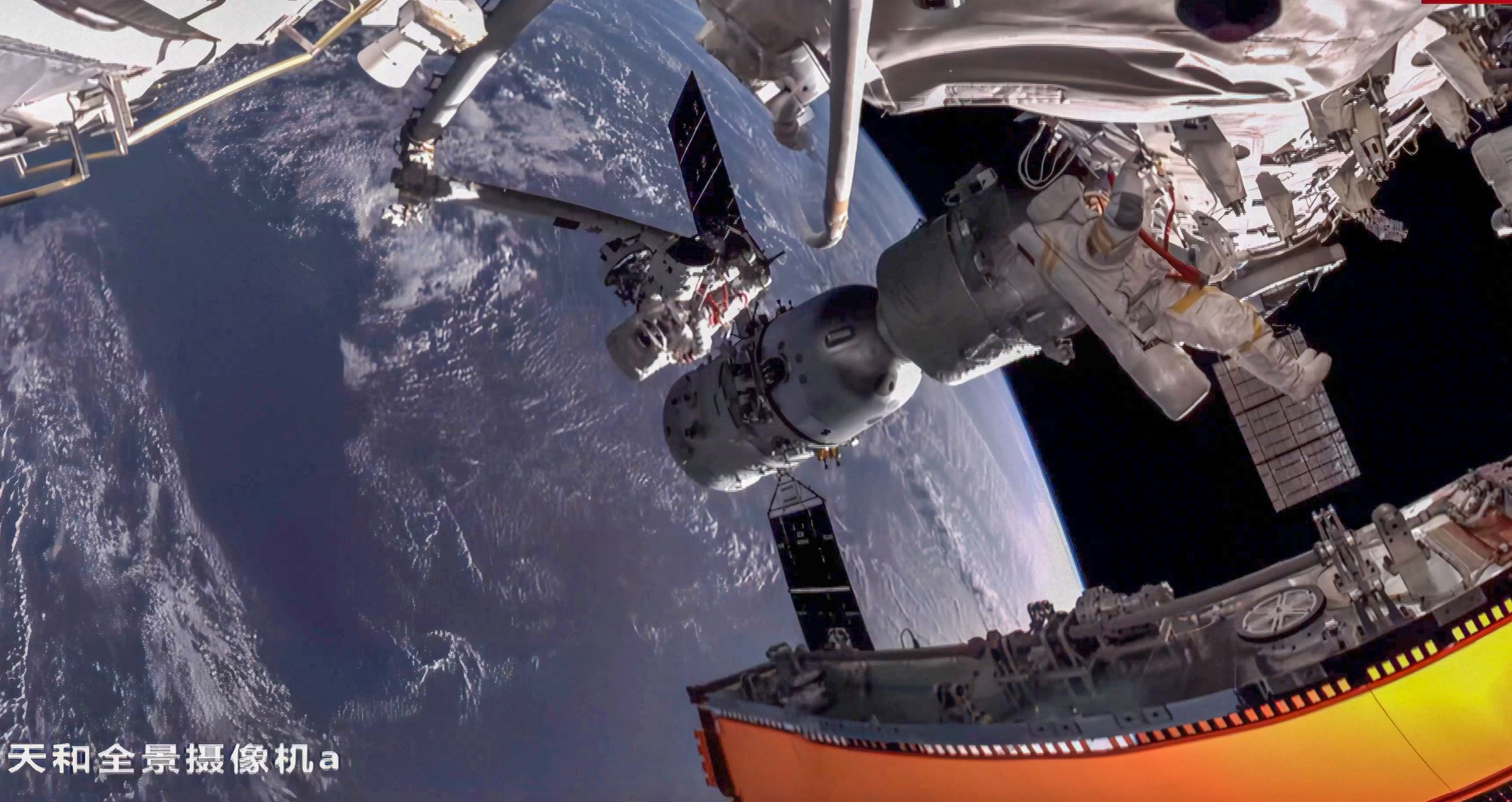HELSINKI — Emerging trends in how China is utilizing and operating its Tiangong space station could impact how the country’s space program is viewed internationally.
“The People’s Liberation Army’s (PLA’s) intention to allow civilian astronauts and nonstate-owned enterprise (SOE) companies to participate in the Chinese Space Station (CSS) are two trends that will probably change the global image of the Chinese space program,” according to a report from the Department of the Air Force’s China Aerospace Studies Institute (CASI), published Aug. 28.
The PLA’s China Manned Space Engineering Office (CMSEO) stated in 2016 that it intended to draw on civilians for CSS crews. This was recently realized as Gui Haichao flew to the CSS, or Tiangong (“Heavenly palace”), this year aboard Shenzhou-16, making him the first of the civilians selected in China’s third and fourth batches of astronauts to reach orbit.
“The decision’s impact on global perception, together with ongoing international astronaut selection, seems very likely to improve the PRC standing at least in its joint program with the United Nations, if not also with existing astronaut programs,” the report read.
This could include the European Space Agency (ESA) reassessing its backing away from astronaut training exchanges with China, with the plan to send European astronauts to Tiangong later this decade.
ESA Director General Josef Aschbacher stated earlier this year, in response to a question from SpaceNews, that the agency had neither the budgetary nor political green light, nor intention, to participate in the Tiangong program.
China began constructing the CSS in 2021 with the launch of the Tianhe core module. China used 10 further crew, cargo and module launches to complete the three-module, T-shaped orbital outpost by the end of 2022.
CMSEO is now planning to launch an extension module and select the first international astronauts to visit Tiangong.
Chinese commercial cargo
Watching the development of how China uses Tiangong will reveal clues about possible international and commercial participation, the CASI article suggests.
To this, another trend that could influence thinking and approaches towards China’s space station is nascent commercialization efforts, including announcing a call for commercial resupply proposals.
“The CMSEO solicitation for non-SOE proposals for CSS resupply vehicles in May of 2023 will also directly impact the long-term development of the Chinese space program and global perception of it.”
China’s next Five-Year Plan period (2026-2030) could reveal the types of companies competing for CSS contracts.
These changes could bring a greater level of transparency and allow for better outside assessments. However, perceptions of how independent Chinese commercial companies are from state-owned entities and PLA influence over the space sector will be another factor.
“A Chinese space program that starts to look more like other advanced programs with varied participation will propel plans the PRC has already put in place to include developed and developing countries in the CSS and the International Lunar Research Station.”This could also generate a response outside China, with Tiangong seen as a competitor to commercial ventures engaged in the ISS. At the same time both China and the U.S. are seeking to gain partners and support for their respective ILRS and Artemis lunar programs.
